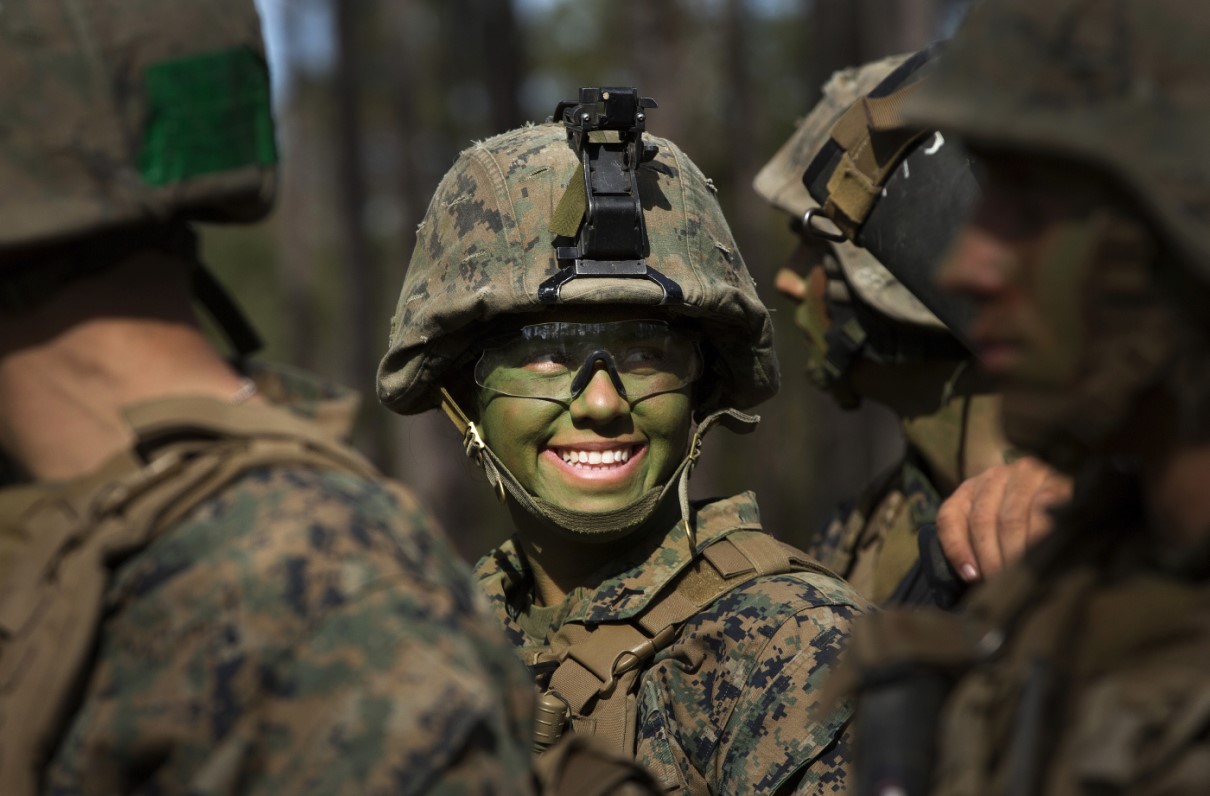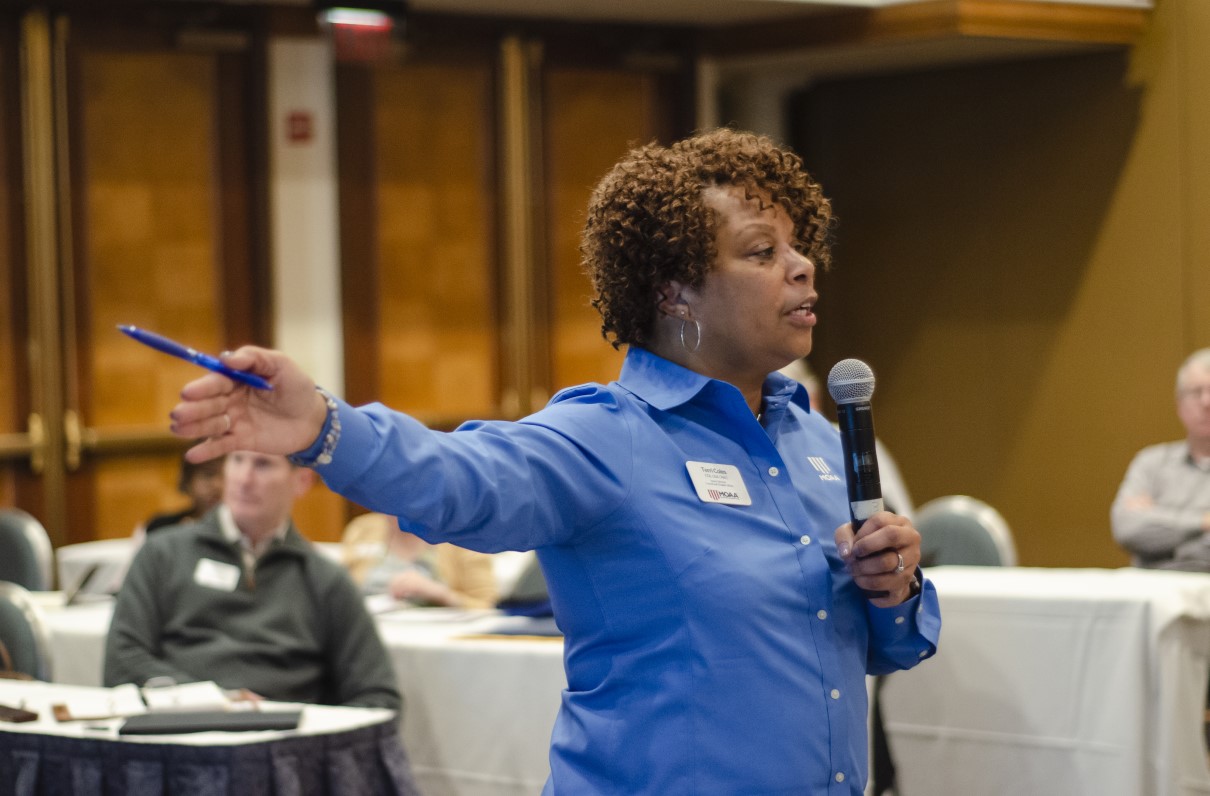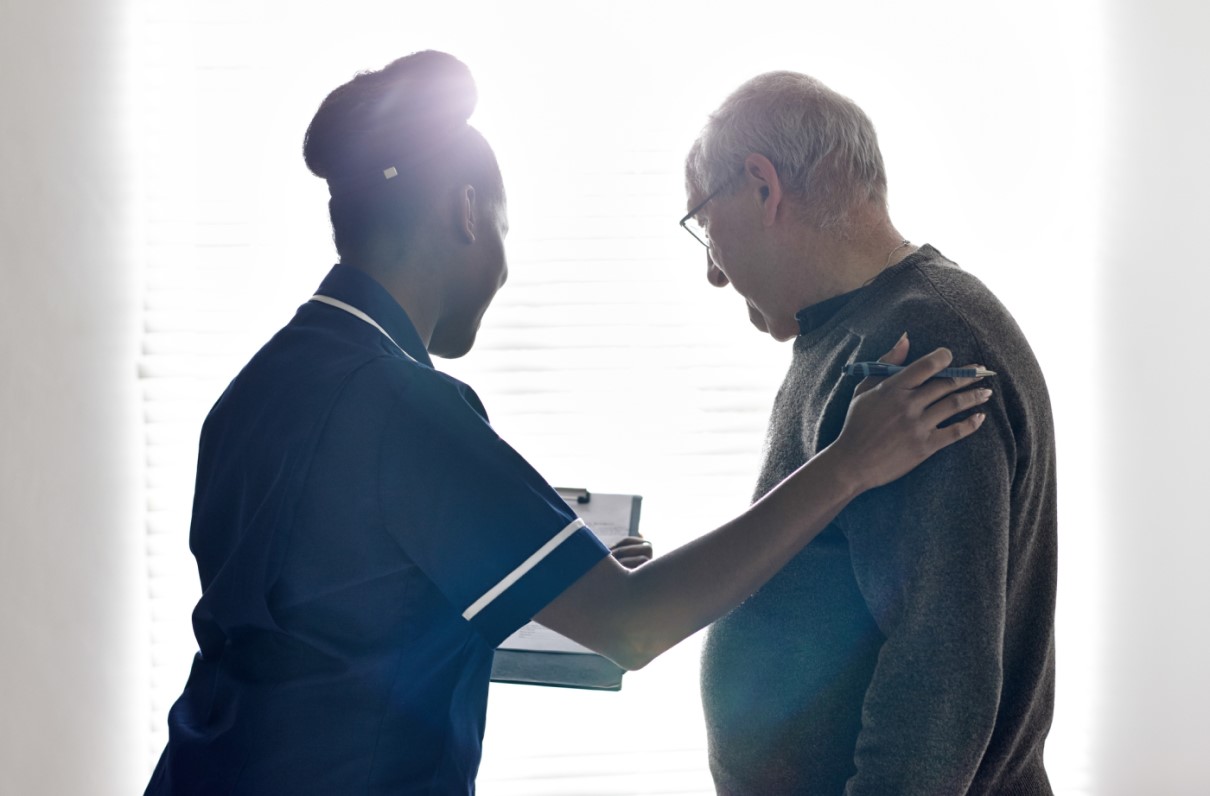(This article originally appeared in Military Officer, a magazine available to all MOAA Premium and Life members. Learn more about the magazine here; learn more about joining MOAA here.)
By Christina Wood
With more than 200,000 women currently serving on active duty - and even more expected to be in uniform in the coming years - understanding the unique health needs of the women who serve is essential to the readiness of the total force.
“It's even more important now, when you have the roles of women changing in the services,” says MOAA's director of government relations for health affairs, Capt. Kathryn M. Beasley, USN (Ret), PhD, FACHE.
According to the VA, women currently account for 9.4 percent of the nation's veteran population. In 25 years, as women continue to enlist in record numbers, that figure is expected to hit 16.3 percent.
“The VA is not moving as quickly as they need to be to meet this bow wave,” says Cmdr. René A. Campos, USN (Ret), senior director of government relations for veterans-wounded warrior care at MOAA and cochair of The Military Coalition Veterans Committee.
[RELATED: Bipartisan Senate Bill Designed to Improve VA Care for Women Veterans]
When it comes to the physical and mental well-being of women who are serving and those who have served, there are many questions in need of urgent answers, Campos says.
“I don't think you'll find anybody in the health care system who will say that we're moving as fast as we should or would like to.”
“I think it's a blind spot. I don't think it's necessarily intentional. I just don't think they've recognized that there might be a problem,” says Col. Ellen Haring, USA (Ret), acting chair of the Service Women's Action Network. The organization recently released a study indicating military women report having trouble getting pregnant at rates “dramatically higher” than the national average.
The health needs of female servicemembers actually differ from the needs of their civilian counterparts in a number of significant ways, according to America's Health Rankings® Health of Women Who Have Served, a groundbreaking report recently released by MOAA in partnership with the United Health Foundation.
Among other things, the report reveals women veterans are susceptible to significantly higher rates of arthritis, cancer, heart disease, chronic obstructive pulmonary disease, and functional impairment as compared to civilian women. Even more troubling, the report concludes women who have served are almost twice as likely as civilians to have suicidal thoughts.
[RELATED: The VA Is Trying to Reach Female Veterans About Their Health Care]
“Our report presents findings, but the hows and the whys are left for us to wonder,” Beasley says. “I would like to look at some of the key findings in the report and start to get to the whys with additional, more targeted research.” In specific, she says, “I'd like to see more investment on the front end by DoD, so we can prevent a lot of these things from happening when women age into the VA.”
Campos agrees. “You can't address these issues if you're not collecting data on the front end - and that has to be DoD. There's only so much the VA can do,” she says. “It's going to require both DoD and the VA working together and sharing information.”
It was data collected by DoD that revealed another disturbing truth: Women injured by a blast while serving in Afghanistan or Iraq were less likely to survive than men who received a similar injury. Dr. Sherry Fleming, a professor of biology at Kansas State University, recently received a grant from DoD to find out why.
“We want to know what is different in men and women. How do we detect the differences, and how do we develop better treatments?” Fleming said in a statement.
Haring points to a gender-specific transition pilot program, the result of a partnership between the Air Force and the VA, as another positive step forward. “[The program] has to do with mental wellness but also the high suicide rates that we see in military women relative to civilian women,” she says. “The women who have participated in it say that it's highly beneficial to them.”
Women Veterans: The Journey Ahead, a report released by Disabled American Veterans last fall, acknowledges some progress has been made when it comes to providing appropriate care for women who serve. The report makes it clear, however, that much work remains to be done. “Every day, in ways both large and small, women veterans go overlooked because we are attempting to wrap them into an existing, at times ill-fitting, system rather than creating a system that wraps around them,” the report concludes.
For change to be effective, Campos says, “Women need to be their own advocates. You need to let your members of Congress know. Inundate the White House switchboard. Follow social media.” Membership in an organization such as MOAA, she adds, is also a great way to ensure your voice will be heard.
However you do it, Campos says, “You need to tell your story. That's going to get attention.”


